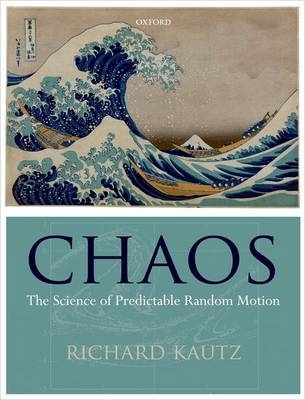
Chaos
Oxford University Press (Verlag)
978-0-19-959457-3 (ISBN)
Based on only elementary mathematics, this engaging account of chaos theory bridges the gap between introductions for the layman and college-level texts. It develops the science of dynamics in terms of small time steps, describes the phenomenon of chaos through simple examples, and concludes with a close look at a homoclinic tangle, the mathematical monster at the heart of chaos. The presentation is enhanced by many figures, animations of chaotic motion (available on a companion CD), and biographical sketches of the pioneers of dynamics and chaos theory. To ensure accessibility to motivated high school students, care has been taken to explain advanced mathematical concepts simply, including exponentials and logarithms, probability, correlation, frequency analysis, fractals, and transfinite numbers. These tools help to resolve the intriguing paradox of motion that is predictable and yet random, while the final chapter explores the various ways chaos theory has been put to practical use.
Richard Kautz is an engineer and physicist who holds a doctorate from the Massachusetts Institute of Technology. During his career at the National Institute of Standards and Technology, he helped develop fundamental quantum standards for both voltage and capacitance. Kautz is a Fellow of the American Physical Society and a recipient of the Samuel Stratton Award for measurement science and the Edward Condon Award for scientific writing.
1. Chaos Everywhere ; 2. Galileo Galilei -- Birth of a New Science ; 3. Isaac Newton -- Dynamics Perfected ; 4. Celestial Mechanics -- Clockwork Universe ; 5. Pendulum -- Linear and Nonlinear ; 6. Josephson Effect -- Synchronization ; 7. Chaos Forgets the Past ; 8. Chaos Takes a Random Walk ; 9. Chaos Makes Noise ; 10. Edward Lorenz -- Butterfly Effect ; 11. Chaos Comes of Age ; 12. Tilt-A-Whirl -- Chaos at the Amusement Park ; 13. Billiard-Ball Chaos -- Atomic Disorder ; 14. Iterated Maps -- Chaos Made Simple ; 15. State Space -- Going with the Flow ; 16. Strange Attractor ; 17. Fractal Geometry ; 18. Stephen Smale -- Horseshoe Map ; 19. Henri Poincare -- Topological Tangle ; 20. Chaos Goes to Work
| Zusatzinfo | 168 b/w line and halftone illustrations |
|---|---|
| Verlagsort | Oxford |
| Sprache | englisch |
| Maße | 195 x 253 mm |
| Gewicht | 1030 g |
| Themenwelt | Sachbuch/Ratgeber ► Natur / Technik |
| Mathematik / Informatik ► Mathematik ► Angewandte Mathematik | |
| Mathematik / Informatik ► Mathematik ► Wahrscheinlichkeit / Kombinatorik | |
| Naturwissenschaften ► Physik / Astronomie ► Mechanik | |
| Naturwissenschaften ► Physik / Astronomie ► Thermodynamik | |
| ISBN-10 | 0-19-959457-0 / 0199594570 |
| ISBN-13 | 978-0-19-959457-3 / 9780199594573 |
| Zustand | Neuware |
| Informationen gemäß Produktsicherheitsverordnung (GPSR) | |
| Haben Sie eine Frage zum Produkt? |
aus dem Bereich


